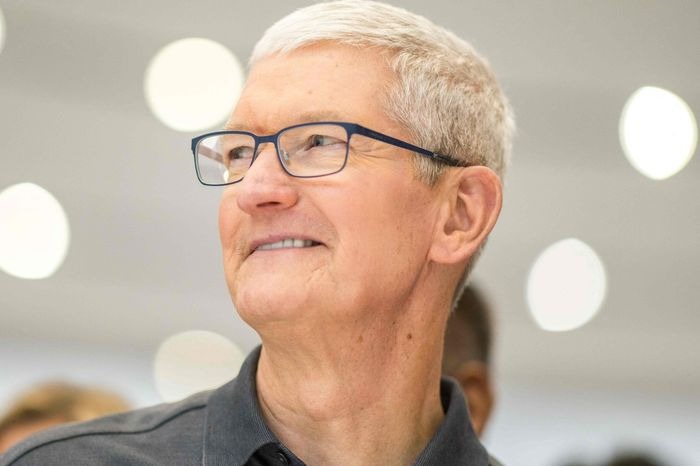Apple CEO Tim Cook recently revealed that Apple is investing significantly in generative AI’s technology – the branch of AI that can create original text, images, audio and more from scratch. However, Cook declined to elaborate on how Apple will specifically utilize generative AI across its products and services.
Let’s explore why Apple sees immense potential in generative AI, what capabilities it is building through major investments, where we may see generative AI crop up across Apple’s ecosystem, and why Apple is still playing its hand close to the chest when it comes to details.
The Transformative Power of Generative AI
Generative AI refers to machine learning models that can produce novel, original content like text, code, visual media, music, and more based on patterns learned from vast training datasets.
Leading generative AI platforms today include:
- Large language models like GPT-3 for generating text
- DALL-E and Stable Diffusion for creating images
- Jukebox and Magenta for music generation
This technology holds tremendous disruptive potential to augment and enhance human creativity in nearly every field.
Generative AI takes a major evolutionary leap past purely analytical AI towards models that can unleash creativity – opening new frontiers for assisting professionals, amplifying personal productivity, customizing user experiences, and enriching entertainment.
Apple recognizes generative AI’s immense possibilities early on and is making big moves to capitalize on the next major leap in AI.
Why Apple is Investing Heavily in Generative AI Capabilities
Given Cook’s confirmation of sizable investments, Apple clearly views generative AI as a transformative technology well worth dedicating major resources towards.
Several strategic factors likely motivate Apple’s generative AI push:
- Maintaining leadership in consumer AI services like Siri in the voice assistant race against Amazon Alexa and Google Assistant
- Unlocking new productivity features across Apple’s software and services ecosystem
- Enhancing core technologies like search and recommendation engines leveraging generative techniques
- Building differentiated consumer experiences fueled by generative content creation possibilities
- Laying platform foundations to enable next-gen third-party apps harnessing generative AI
Apple is playing catch up relative to open AI research from Google and others. Investing now helps elevate Apple’s existing offerings while readying the company for coming generative-powered app innovations.
How Might Apple Leverage Generative AI Across its Products?
While Apple remains secretive about its plans, examining areas generative AI could enrich points to likely applications:
Software & Services
- Siri: More conversational responses powered by large language models
- Photos: Intelligent media creation like captions for memories
- Apple Music: Personalized playlists and music recommendations
- App Store: Generative app descriptions and textual content
- Translate: Improved translation quality using generative techniques
- Maps: Rich optimized travel guide content generation
Creative Applications
- Final Cut Pro: Auto-generated effects, captions, and video summaries
- Logic Pro: AI-assisted music composition and production
- Apple Books: Tools empowering authors through generative writing and editing aids
- Apple Arcade: Procedural content creation for games
Business Innovation
- Advertising: Dynamic ad content tailored to viewers
- Retail: Personalized ecommerce experiences powered by customer data
- Customer Support: Generative chatbot capabilities for automated help content
Apple’s immense ecosystem scale gives generative AI ample room to enhance experiences once mature capabilities emerge from R&D.
Apple’s Measured Approach Towards Communicating Generative AI Plans
Given the nascent state of consumer generative AI, Apple is wise in not over-promising specific applications yet. AI research iterations happen rapidly, and applications likely remain highly experimental currently.
This contrasts with Meta openly discussing integrations into apps like Instagram and Facebook that have drawn criticism over maturity and readiness concerns.
Apple avoids potential backlash and issues like copyright infringement by playing their cards close to the chest during development. Only once confidence in ethical deployment exists will specifics likely emerge.
That said, some speculate Apple may give a glimpse into its generative AI progress during its annual developer’s conference mid-2023. This venue would provide the right forum to inspire developers with capabilities while setting cautious expectations.
Addressing Key Privacy, Security and Ethics Considerations
Widespread commercial deployment of generative AI on Apple’s level requires resolving thorny challenges:
- Preventing exposure of potentially sensitive training data
- Blocking unlawful use to spread misinformation or inappropriate content
- Mitigating biases exacerbated by imperfect data or algorithms
- Protecting copyrights and preventing content theft
- Establishing transparency around data collection and model capabilities
Within these areas, Apple fortunately maintains strong stances regarding user privacy, security and fair innovation.
Their measured approach gives confidence they will incorporate safeguards aligning with Apple’s principles rather than rushing half-baked experiences to market. This aligns with Apple’s track record of patience launching products only once properly vetted.
Predicting Where Apple Goes Beyond Generative Content Creation
Looking farther ahead, Apple’s generative AI investments could expand beyond basic content creation into more futuristic applications:
- Generative Design – AI-assisted design of products, interfaces, apps, and workflows
- Lifecycle Analysis – Modeling device lifespans and environmental impact generatively
- Predictive Analytics – Generating market forecasts and predictive intelligence
- Prototyping – Testing software or hardware concepts virtually
- Personalization – Unique combinations of colors, textures, and materials tailored to users
In essence, generative techniques may transform everything from Apple’s internal operations to the very way their products look and feel in users’ hands.
This synergy between AI, design, and engineering could enable new paradigms of manufactured goods. Apple is keen to pioneer these innovations before competitors.
The Road Ahead for Generative AI
While generative AI holds vast promise, Apple is still early on the technology curve. Realistically, it may take years before Apple’s R&D investments manifest in consumer offerings.
But generative AI’s immense potential makes Apple’s ambitious push a valuable long-term play setting the company up as a leader molding how AI transforms consumer software, services, and experiences.
Thankfully, Apple understands the importance of building generative AI responsibly in alignment with user needs and societal values. Through patience and ethical foundations, they are poised to unlock generative AI’s next wave of innovation.
Conclusion
Apple diving headfirst into generative AI signals how serious the implications of this technology are for the future of personal computing and entertainment. While Apple is still playing its hand close to the chest, their vast resources provide confidence they can build generative AI into a core strategic advantage over time.
But ultimately, the winners will be everyday users as generative AI unlocks new frontiers of creativity, personalization and productivity that augment our human capabilities in previously impossible ways. Apple is laying the groundwork for this consumer generative revolution.
Frequently Asked Questions About Apple and Generative AI
Here are some common questions about Apple’s investments in generative AI technology:
What are some examples of generative AI?
Popular examples include text generation tools like GPT-3, visual art creation systems like DALL-E 2, and music composition algorithms like Jukebox.
How could Apple use generative AI in Siri?
To enable more natural conversational responses from Siri powered by large language model AI rather than scripted phrases.
Will Apple release a generative AI API for developers?
Possibly in the future. An API would allow third-party apps on the App Store to harness generative capabilities.
When will we see the first consumer generative AI features from Apple?
It remains unclear, but potentially previews could come in 2023. Wide mainstream deployment may take years as technology and safeguards evolve.
How can Apple ensure responsible use of generative AI?
By focusing relentlessly on privacy protections, security measures, reducing biases, establishing ethical guidelines, and setting proper user expectations about capabilities.
Do researchers need special access to train models on Apple data?
Yes, Apple tightly controls access to user data for research purposes. Most training likely leverages publicly available data sets.
Apple has clearly concluded generative AI is too powerful to ignore. While we await details on consumer implementations, the possibilities are endless for enhancing users’ digital lives.










Add Comment